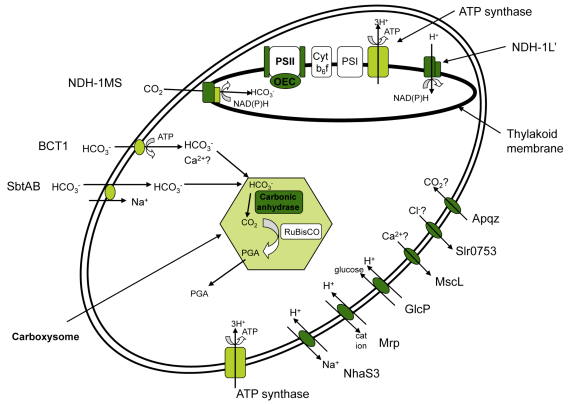F. Transcriptional reposnse to change in pH from 7.5 to 10
Many cyanobacterial strains are able to grow at a pH range from neutral to pH 10-11. Such alkaline conditions favor cyanobacterial growth (e.g., bloom formation) and cyanobacteria must have developed strategies to adjust to changes in CO2 concentration and ion availability. Synechocystis sp. strain PCC 6803 exhibits similar photoautotrophic growth characteristics at pH 10 and pH 7.5 and we examined global gene expression following transfer from pH 7.5 to pH 10 to determine cellular adaptations at elevated pH. The strategies used to develop homeostasis at alkaline pH had elements similar to many bacteria, as well as components unique to phototrophic microbes. Some of the response mechanisms previously identified in other bacteria included up-regulation of Na+/H+ antiporters, deaminases and ATP synthase. In addition, up-regulated genes encoded transporters with the potential to contribute to osmotic, pH and ion homeostasis; e.g., a water channel protein, a large-conductance mechanosensitive channel, a putative anion efflux transporter, a hexose/proton symporter and ABC transporters of unidentified substrates. Transcriptional changes specific to photosynthetic microbes centered on NADH dehydrogenases and CO2 fixation. The pH transition alters the CO2/HCO3- ratio within the cell and the up-regulation of three inducible bicarbonate transporters (BCT1, SbtA and NDH-1S) likely reflects a response to this perturbed ratio. Consistent with this was increased transcript abundance of genes encoding carboxysome structural proteins and carbonic anhydrase.

Interestingly, transition to pH 10 resulted in increased transcript abundance of photosystem II genes encoding extrinsic and low molecular weight polypeptides, although there was little change to photosystem I gene transcripts (as abstracted from Summerfield and Sherman, 2008).
Back
